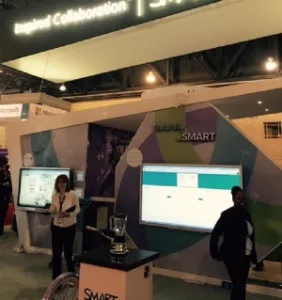The ISTE 2015 educational conference, with over 21,000 in attendance, is the largest ed-tech conference held in the U.S. As expected, ISTE experienced solid growth in attendees this year, but the conference also topped all previous ISTE conferences for overall quality.

Yet the real story underlying this conference begins and ends with some starkly visible trends (and non-trends). Let’s zoom in on some of the developments emerging from this huge US educational technology event.
Display-related News
- Unlike other conferences, where interactive whiteboards (IWBs) have been nearly completely supplanted by interactive touch displays, the older interactive whiteboard technologies are still stubbornly clinging to their exhibit hall presence, although greatly reduced in number. It feels stale.
- Not so for SMART Technologies, the IWB stalwart in the education market has made a complete transition, showing only interactive touch panels to educators on the expo floor. It feels fresh.
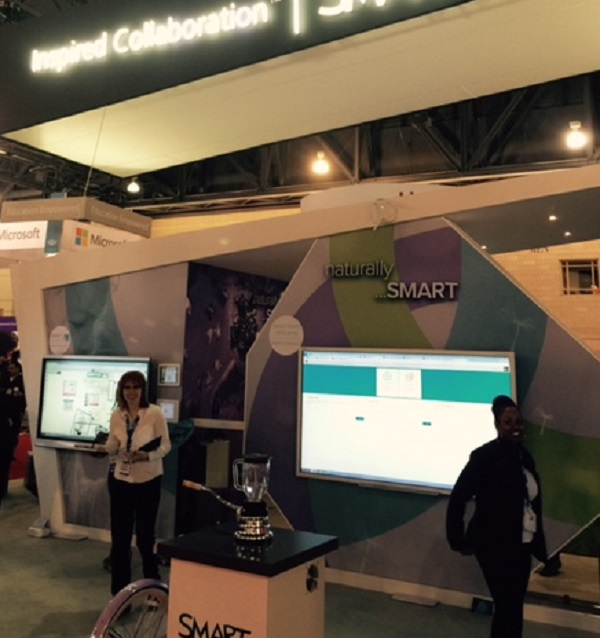 SMART Technologies displayed interactive touch, all the time.
SMART Technologies displayed interactive touch, all the time.
3D @ ISTE
- 3D was everywhere at ISTE 2015—in the keynote sessions, in concurrent sessions, in the exhibit hall, and within the ISTE 3D Network’s special events. As I wrote in 3D by Any Other Name, 3D is difficult to track because it softly couches itself under different language and nomenclature.
- ISTE keynote speaker and television anchor, Soledad O’Brien, astonished educators with her showing the potential of stereo 3D immersive virtual reality (Google Cardboard) in learning.
- The exhibit hall was filled with 3D players and technology displays: Unity, AVRover, Samsung, zSpace, Sensavis, High Fidelity, DesignMate, Sterling Pixels, Google, various small Korean startups, and a dozen 3D printing or 3D scanning companies. zSpace played well before educators once again, earning a best-in-show award and Sensavis was showing some attention-getting new simulations
- Teracle, a Silicon Valley company, featured their Teraglass wearable solution, able to display both top/down or side-by-side stereo display in an attractive headset. 3D content can be downloaded to the student via their SAMCAST content site. They also offered a content development environment and studio for teachers to develop educational content in stereo 3D.
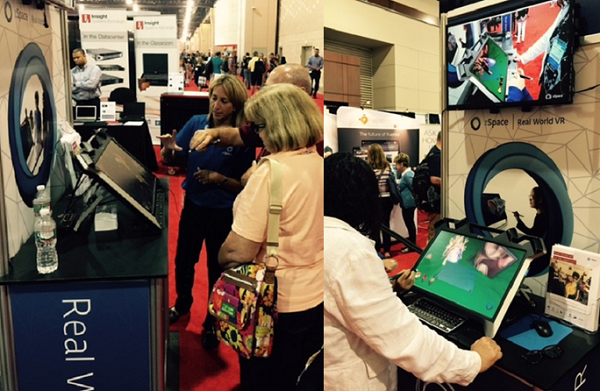 zSpace wins another Best-in-Show Award
zSpace wins another Best-in-Show Award
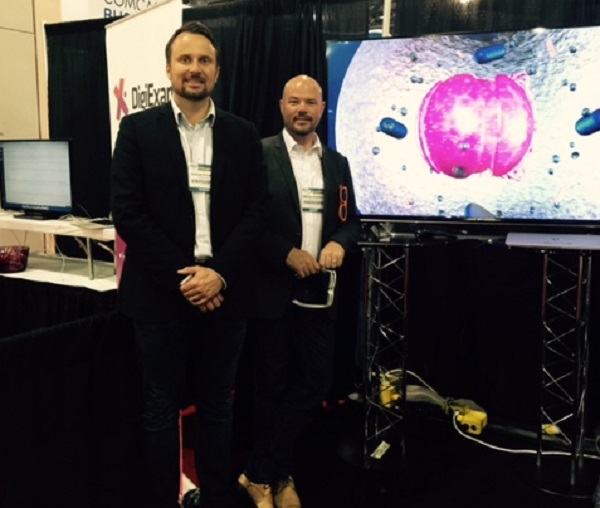 Sensavis turned heads with new simulations
Sensavis turned heads with new simulations
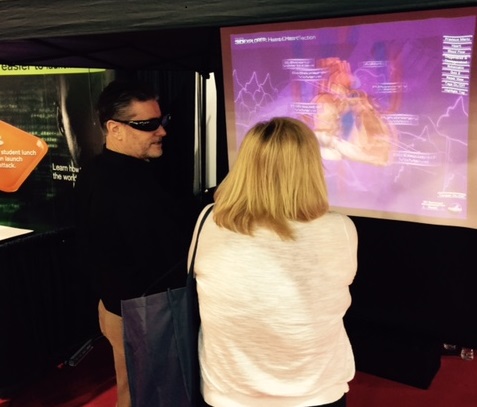 AVRover teamed with DesignMate to attract crowds and show stereo 3D
AVRover teamed with DesignMate to attract crowds and show stereo 3D
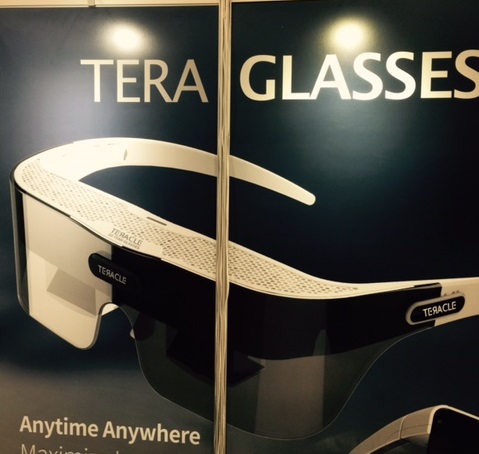 Teracle demonstrated a very small, very powerful solution–TeraGlass
Teracle demonstrated a very small, very powerful solution–TeraGlass
3D Events
At ISTE 2015, there were more than 21 presentations scheduled on the subtopics of 3D visualization, 3D design, and 3D printing, equally distributed. And, as mentioned previously, the kickoff keynoter, Soledad Obrien, also showed stereo 3D. Within the ISTE organization, the ISTE 3D Network continued its advocacy efforts. The ISTE 3D Network is a special interest group (or personal learning network) of educators within ISTE who are interested in the promise of 3D in K-20+ learning. The ISTE 3D Network itself hosted four events:
- The ISTE PLN Open House: 3D Network Table. The table was swarmed by literally hundreds of interested educators, most of whom knew very little about 3D in general and many of whom joined the network on the spot.
- The 3D Network Panel. The panel discussion “Dimensions in Learning: Designing, Visualizing, and Making in 3D” was very crowded with attendees in one of the large meeting halls.
- The 3D Network BootCamp. This workshop was also nearly full, attracting interested educators across all grade levels.
- The 3D Network “Gathering.” The annual face-to-face meeting of the 3D network was lightly attended by educators and vendors, no doubt due to an unfortunate evening start time and some heavy cloudbursts.
Len Scrogan and Nelson Taylor catch a breath before the 3D Network Open House begins
Trends
Some of the most prominent themes at ISTE 2015 included topics like coding, gamification, 3D printing, and the Maker movement. The following display-industry related memes were also strongly evident:
- The 1:1 and BYOD revolution was undoubtedly the paramount theme at the ISTE conference, which is good news for the display industry. No diminishing market here.
- Device management solutions continue to spread like wildfire. It seems almost everyone has partnered up with solutions to manage, broadcast, share or observe device displays: projector companies, document camera companies, hardware companies, software companies—they are all getting in the device and display sharing game. The challenge is ‘noise’: it is difficult for educators to compare features, vet claims, and understand the technical limits of device and display management tools
- Stereo VR (the headgear variety) also evidenced a surprisingly strong foothold at the conference, with Google, Samsung, Hi-Fi, and other companies leading the way for keenly delighted educators. (I will do a deep dive on this topic in a coming article.)
Non-trends
To no one’s surprise, some ‘non-trends’ were equally apparent. Although some new technologies warrant a boastful presence at industry conferences, these same technologies are strangely quiet—dormant—pending at educational conferences. These include:
- Autostereoscopic or glasses-free 3D
- 4K and 8K display technologies
*****
Overall, the ISTE 2015 educational conference was a memorable event in the steady upwards (and sometimes downwards) trajectory of display technology in education. – Len Scrogan

